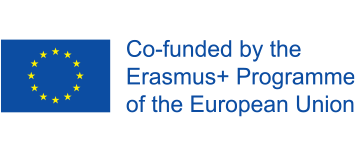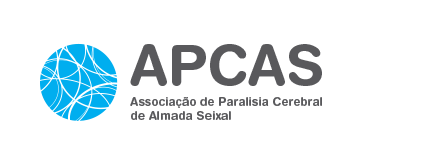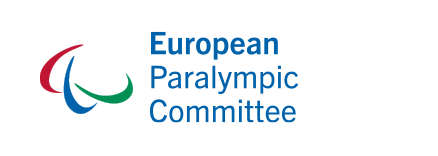PROFILE OF PERSONS WITH DISABILITIES
CHAPTER II
With developments in the area of health, the theoretical models leading to the individual’s view on health have been changing over the years, changing terminologies and their definitions. In this evolution of the global political thought regarding persons with disabilities, it has transformed the terminologies, concepts, definitions and, consequently, has an impact on the concept and status in society of persons with disabilities.
In this evolution, we highlight the concept of disability as well as that of functionality and disability of the individual.
The basis of these constructs is the integration of medical and social models (WHO, 2001). The medical model considers that disability is a person-centered problem, the cause of which is a disease or other health problem, where care is person-centered and involves curing the disease or adapting and changing one’s behavior. The social model, in turn, considers disability as a problem of an individual, which is created by society and is not its personal characteristic or attribute, but a set of conditions of the social environment that needs to be altered by social policies through change of attitudes. Thus, the current approach to the concept of capacity / disability is biopsychosocial, as it integrates both biological as well as social and individual issues into the concept of disability (WHO, 2001).
In this line of thought, other concepts are reviewed and redefined by the International Classification of Functioning, Disability and Health [ICF] (WHO, 2001). Disability is currently defined as a “problem in body functions or structures, such as a major deviation or loss”, relative to the body’s standard biomedical state, functions and structures. To understand this definition, it should be noted that body functions are defined as “biological functions of organic systems (including psychological functions)” and body structures as “anatomical parts of the body, as organs, limbs and their components”. Disabilities may be temporary or permanent, progressive, regressive or stable and even intermittent or continuous.The deviation may be mild or severe and may vary over time, and implies a cause although this cause may not be directly explanatory of the disability, as this it may come from a disease or disorder.
Having defined the biological concept, it is important to address the social issue. Thus, the concepts of activity and participation are defined (WHO, 2001): activity being the “execution of a task or action by an individual” and participation the “involvement of an individual in a real life situation”. Thus, the difficulties resulting from a deviant health condition that an individual may have in performing tasks and activities are considered participation restrictions and the problems faced by the individual in real life situations are considered participation restrictions.
Thus, the functionality of an individual is an interaction between health condition and contextual factors, which include environmental factors (physical, social and attitudinal environment) and personal factors (personal characteristics, history and lifestyle) – i.e. Functionality is a term that encompasses all body functions, activities, and participation (WHO, 2001). Like this,
The functioning of an individual in a specific domain reflects an interaction between the health condition and the contextual: environmental and personal factors. There is a complex, dynamic and often unpredictable relationship among these entities. (WHO, 2013, p.4)
When you want to include a person with disabilities in and through sport, while looking at the disabilities that participants have, you should look at their functionality, but practitioners who engage in physical or sporting activities are sometimes unaware of functional profiles of their practitioners.
Of course, they should collect clinical information (eg diagnosis, associated health problems, medication, etc.), which they can simply add functionality questions to by using the Washington Group Short Set on Functioning (WG-SS) that used the ICF as a framework, focusing on the component of activity, or functioning, limitations. In its shortest version is comprised of questions on six core functional domains: seeing, hearing, walking, cognition, self-care, and communication – with a rating of “No difficulty”, “Some difficulty”, “A lot of difficulty”, “Cannot do at all” (WDGS, 2016).
Thus, despite knowing in which areas the practitioner is functional, we need to know what the difficulties are in the referenced domains, and the questions that are posed were not designed to measure all aspects of functional diversity, but the areas of functioning that are likely to be identify most people at risk of restricted participation (WDGS, 2016).
In this way, the extended form of this questionnaire can be used – supplemented by additional information, which allows us to have more information at: LINK
This questionnaire does not identify particular health conditions or diagnostic categories but rather captures the possible impact of these conditions on functional abilities and of course it is important discuss the options with the athlete. This information should therefore be analyzed with other information in a way that incorporates the entire biopsychosocial disability model. Therefore, get to know the full International Classification of Functioning, Disability and Health (ICF) at: https://www.who.int/classifications/icf/en/ and its full scale at: LINK – for the most complete evaluation possible.
In a simple way, by adapting LINK, we can verify that the following profiles (properly marked in the table below) – where you can check for difficulty or not:
- Through the analysis of the profile marked in green, adding to the clinical information (always to be collected by the professional), there are no difficulties in seeing, hearing, remembering and communication; but it turns out to have difficulties with movement, being a wheelchair user – affecting self-care.
- Through the analysis of the profile marked in yellow, adding to the clinical information (always to be collected by the professional), there are no difficulties in seeing, movement and self-care; but a lot of difficulty at the hearing level and some difficulty at the remembering and comunication level.
ATTENTION! This is an adaptation of the previously mentioned questionnaire. We suggest its use in full through the link mentioned above.

*If use any equipment (Assistive Technology Device) or receive help for getting around, state which one… Manual and Electric Wheelchair.
** As in the movement, here it would also be important to ask if you use products and technologies for communication (alternative communication and others), and which ones?
However, although it is thus possible to identify areas with and without difficulty (which can be complemented or enhanced), as mentioned in the previous chapter, if some components of this profile give us some indications of adaptations that will have to be made at the outset (e.g. if profile in yellow there are some difficulties in remembering or concentration, at first the teaching styles will have to be adapted) – only when performing / experimenting with the tasks will be possible to define – taking into account the task, the functional profile and the involvement – can all adaptations be made.
This is a way of demystifying functional profiles, because sometimes, in clinical terms, they tell us that the person has cerebral palsy, for example, but they do not tell us what they can and cannot do – and this is fundamental when defining adaptation strategies. It is also critical in terms of engagement factors, to analyze accessibility and / or non-use of assistive products.
These are just a few examples that can make the process even more comprehensive and above all that the challenge of inclusion is accepted as constant flexibility, intrinsic creativity and permanent diversification – where capacity prevails over disability – and the inspiring principles are:
“Disability is Not Inability”
“See the Ability not the Disability”
For all, without exception, to believe and put into practice that:
“… One day the world will be like this, we will not look at differences from others, but at the potentialities we have when we are together!”
OUR SUPPORTER

OUR PARTNERS





